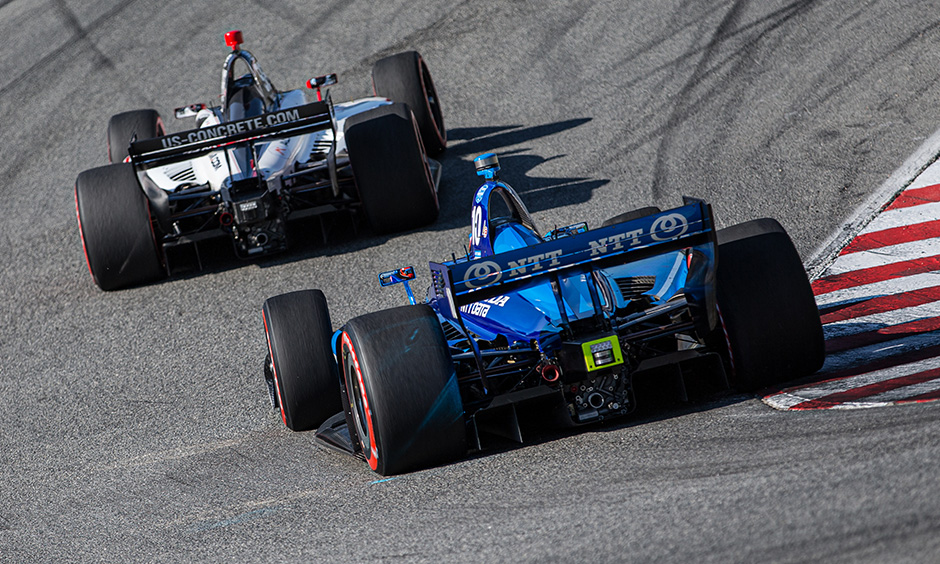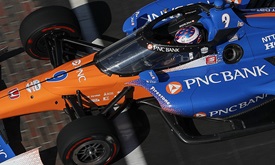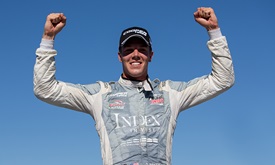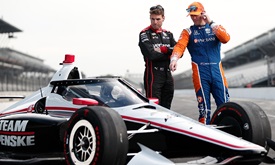An angry Rosenqvist delivered one of season's best drives
OCT 03, 2019
Felix Rosenqvist of Chip Ganassi Racing delivered one of the most impressive drives of the 2019 NTT IndyCar Series season when he drove from 14th to fifth in the season-ending Firestone Grand Prix of Monterey on Sept. 22 at WeatherTech Raceway Laguna Seca.
The spirited drive in the No. 10 NTT DATA Honda was the result of being upset with the inference penalty in qualifying the day prior after he spun early in the first round. Per INDYCAR rules, Rosenqvist’s fastest two laps did not count, and he was not allowed to advance to the next round.
“If I didn’t get angry I think there was something wrong with me,” Roseqnvist later said. “We all go 100 percent into this with full hearts and when something like that happens …”
Rosenqvist was able to take a deep breath and say “that’s passed.”
Rosenqvist talked about the comeback performance he delivered at the Laguna Seca that allowed him to capture the Rookie of the Year title as Colton Herta of Harding Steinbrenner Racing won the 90-lap race.
“We were really far behind at one point, and I just tried to focus on the rookie championship,” he said. “I knew technically I could get sixth (and still win the rookie title), but I didn’t know (I had won it) until I finished the race, and I was kind of shocked about it.”
There were fears this would be a circuit where passes would be difficult to come by. Rosenqvist said finishing fifth under those circumstances was more gratifying that winning the rookie award.
“That’s probably best of the rest,” he said of finishing behind Herta, two Team Penske cars (driven by one-time series champions Will Power and Simon Pagenaud) and five-time NTT IndyCar Series champion Scott Dixon, also of Chip Ganassi Racing.
Rosenqvist had to measure his aggressiveness against taking care of the tires, which across the field a fair amount of degradation due to the road course's aging surface.
“It was an interesting race because there was a lot of (tire degradation), and we all knew that," Rosenqvist said. "It was not just being aggressive all the time. It was kind of pick your moment and then after that trying to save the tires, trying to save the fuel.
“You can feel every time you push through a corner properly, the next corner you’re just on high. It was really tricky managing that, but I think we did a really good job with it. We were really good on the red (tires), maybe a little bit worse on the blacks, at least compared to the Penske cars. They seemed to come back a bit at the end of the stint.”
Rosenqvist called it “a controlled drive.”
“As I said before, you kind of had to be sensible when you had to and aggressive when you had to, and it actually made a really interesting race,” he said. “I think everyone enjoyed that.”
We certainly did.



















